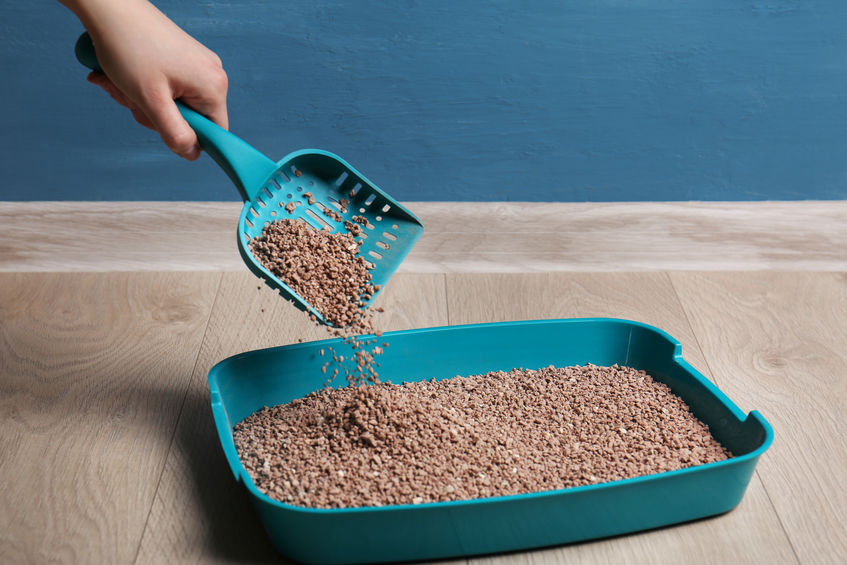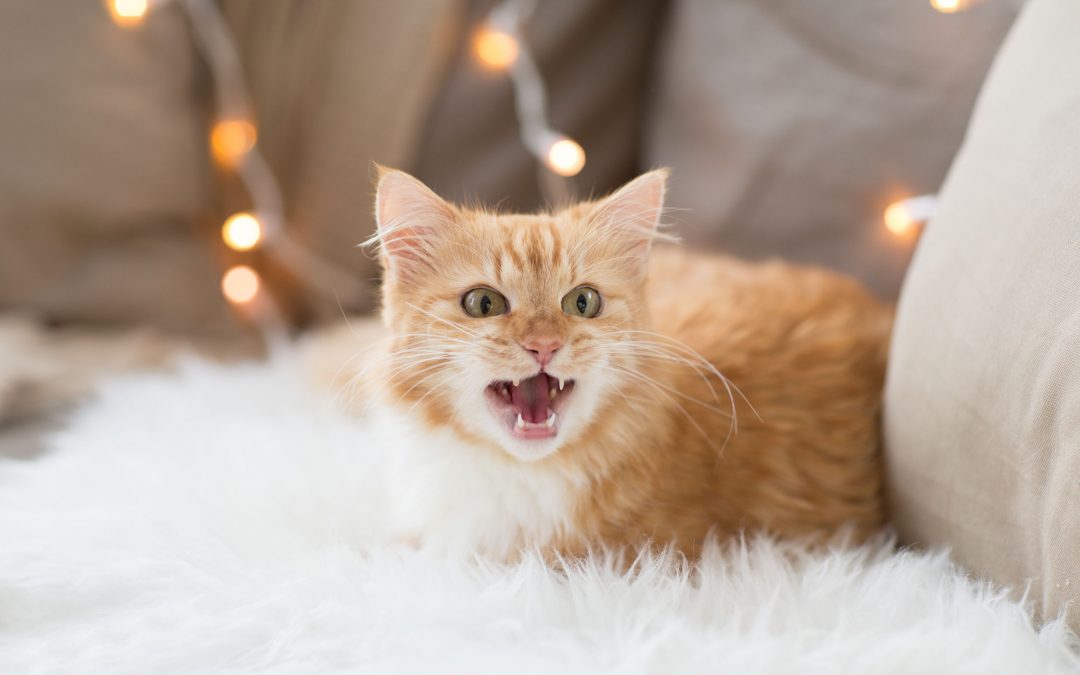One of the most daunting things about getting a new cat or dog is potty training them. For new pet owners, potty training can be especially challenging.
If you’re a new kitten owner, there’s good news: litter training a kitten is often easier than potty training a puppy. Factors like litter, litter box placement, and positive reinforcement all matter when potty training a cat.1 Read on to learn how to potty train a kitten.
Tips For Litter Training A New Cat: How To Potty Train A Kitten With Positive Reinforcement
Cats may learn to use their litter box with little training. A litter box appeals to their instinct to bury their waste. Some cats, though, will need proper training. Try positive reinforcement when potty training a kitten. In other words, try not to scold your cat or associate their mistakes with the bad. Instead, recognize their efforts with positivity. To do this:
Praise Your Cat: When your cat does something that they are supposed to do (like go potty in the litter box), praise them for it. This is especially effective if you are training a young kitten, since they are more impressionable.
 Give Your Cat A Treat: For food-motivated cats, giving them a treat when they use the litter box signifies that they are doing something correctly. If they take a liking to the treats, it can be easy for them to associate good behavior with a reward.2
Give Your Cat A Treat: For food-motivated cats, giving them a treat when they use the litter box signifies that they are doing something correctly. If they take a liking to the treats, it can be easy for them to associate good behavior with a reward.2
Positive reinforcement steps can help encourage good habits for both you and your cat. When litter box training, try to focus on the good more than the bad.
Selecting The Right Litter Box For Your Cat’s Needs: Accessibility Is Important
Think of a litter box as your cat’s personal bathroom. Since they’re doing their private business in there, it’s important to keep your cat’s best interest in mind. Accessibility is important for your feline friend, so make sure to choose the right litter box for them. While a certain litter box size and shape might be good for you, it may not be the best for your cat.
Make sure the size of the litter box is big enough for your kitty. In terms of shape, tall and covered litter boxes are a good idea if you’ve got a cat spraying urine when they go. Enclosed litter boxes are often better for cats since they feel safe inside of it. Consider a litter box tray to put under your litter box to help reduce messes.3
Ultimately, make sure you are choosing a litter box that is comfortable for your cat.
Buying Kitty Litter: How To Choose The Right Type Of Cat Litter
With so many choices of cat litter, how do you know which one is right for your cat? Clay litter is a popular choice because this cat litter can help eliminate odors from urine and feces. These litters also foster clumping, which can make scooping easy.4
Now, do you want scented or unscented litter? This usually comes down to personal preference, but cats may favor unscented litter. They have much more sensitive noses than humans do – so what may smell like a light scent of pine to us could be overpoweringly strong to them.5
Remember: litter training a kitten or cat is much easier if they like their litter.
Believe it or not, the texture of the litter may also matter. If your cat has sensitive paws, they may not like the feeling of rough litter. If this is the case, your cat may start to have accidents outside of their litter box. If you think your cat may not like the feeling of your current litter on their paws, consider switching to a finer, softer type of litter.6

Choosing The Right Area Of Your Home: Does Your Kitten Need A Private Location?
Cats usually prefer their litter box in an area away from the hustle and bustle of everyday life. Place your litter box in an area that makes your cat feel safe. And once you find a spot that your cat prefers, keep the litter box there. Basically, make sure you are placing your cat’s comfort first when you are litter training them.7
My Cat Is Still Having Accidents After Litter Box Training
If your kitty is still having accidents after litter box training, consider their lifestyle habits. What (and how often) they eat or drink could contribute to accidents. Some things to be watchful of include:
Feeding Schedule: Your cat may be using the restroom a lot if they constantly have access to food and water. Regulating their feeding schedule with set meals might help avoid accidents.8
Cat-To-Litter Box Ratio: If you have more than one cat, there should be multiple litter boxes in different locations.
 Cleanliness: Your cat may not be using the litter box because it is dirty. Make sure you are regularly scooping and changing out the litter.9
Cleanliness: Your cat may not be using the litter box because it is dirty. Make sure you are regularly scooping and changing out the litter.9
Running Out Of Options?
If you feel like you’re running out of options with a cat that cannot be potty trained, consider crate training. If your cat is urinating or defecating outside of their litter box consistently, keep them in a crate if you cannot keep an eye on them.
Eventually, your cat will learn to associate the crate with a loss of freedom if they urinate anywhere else other than the litter box.10
If your cat is having accidents outside the litter box, they may be bored and craving your attention. Consider getting scratching posts to curb bad behavior and encourage playtime.11
Final Thoughts On Litter Training A Cat
As a pet owner, potty training can be daunting. With the right materials and training techniques, you’ll be able to litter train a kitten or cat in a matter of weeks. If you’re sure your training is solid, and you’ve found the perfect litter box and space for your cat, you shouldn’t have any problems.
If your cat is showing abnormal behavior, such as urinating in places they shouldn’t, despite being litter trained, visit your veterinarian. They can help figure out whether the problem is medical or behavioral – and offer tips and suggestions to keep your cat happy and healthy.
Learn More:
Why Does My Cat Lick Me So Much?
What Human Foods Can Cats Eat? People Food For Pets
Why is My Dog Scratching So Much?
Sources
1 https://www.southbostonanimalhospital.com/blog/how-to-potty-train-your-puppy-or-kitten
2 https://www.familyeducation.com/life/pet-training/using-positive-reinforcement-train-your-cat
3 https://www.preventivevet.com/cats/how-to-choose-the-best-litter-boxes-for-your-cats-and-why-you-need-to
4 https://www.petfinder.com/cats/bringing-a-cat-home/choose-cat-litter/
5 https://fearfreehappyhomes.com/cat-litter-science-why-to-let-your-cat-choose/
6 http://www.communityconcernforcats.org/resources/litter-box-behavior/
7 https://www.cathealth.com/tips/2267-cat-litter-box-placement
8 https://www.kittygoespotty.com/toilet-training-tips.php
9 https://www.vet.cornell.edu/departments-centers-and-institutes/cornell-feline-health-center/health-information/feline-health-topics/feline-behavior-problems-house-soiling
10 https://www.petfinder.com/cats/cat-problems/crate-train-a-cat/
11 https://vcahospitals.com/know-your-pet/cat-behavior-problems-house-soiling





























